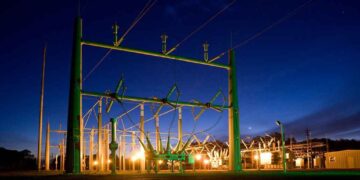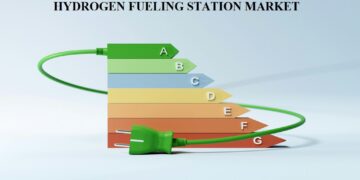As energy demand is set to grow with the world’s drive towards sustainability and efficiency, power systems are growing in complexity to deal with. The conventional means of power distribution optimization, load forecasting, and grid stability are now increasingly being supplemented—and, in certain instances, substituted—by sophisticated technological interventions. Among such innovations, Generative Large Models (GLMs) are a revolutionary force in power system optimization, which merges the potential of artificial intelligence (AI) with immense scaling power to reshape the contemporary energy landscape.
GLMs, a branch of machine learning models capable of processing enormous amounts of data, are increasingly being used to make power system operation more efficient, reliable, and conducive to easy integration of renewable energy sources. Their capacity for predictive analysis, simulation of operations under different conditions, and real-time adjustment based on evolving situations makes GLMs a revolutionary aid to solving the urgent issues in energy systems across the globe.
The Role of Power System Optimization in Energy Management
Power system optimization is at the core of contemporary energy management, given that electricity is produced, transmitted, and used as effectively as it can be. This entails a series of intricate activities, such as generation scheduling, load balancing, fault detection, and grid stability maintenance.
These functions have traditionally been executed through deterministic models and rule-based systems, with heavy reliance upon historic data and pre-established algorithms. Though effective to some extent, these approaches are typically inadequate at coping with the intricacies and uncertainties brought about by renewable energy integration, variable demand, and the growing decentralization of power systems.
This is where GLMs step in. Utilizing their capacity to process large volumes of data and learn from it, these models provide a more flexible and holistic approach to power system optimization. GLMs not only perform well when solving current challenges but also help utilities and operators predict future complications and address them ahead of time.
What Are Generative Large Models (GLMs)?
In essence, Generative Large Models are sophisticated AI models constructed to learn, create, and forecast intricate patterns of data. Unlike the conventional machine learning algorithms, which tend to be customized for one task, GLMs are structured to address various interrelated issues in a single framework. Their generative properties allow them to model different situations, forecast outcomes, and give actionable recommendations with unprecedented precision.
One of the most important characteristics of GLMs is that they can handle multidimensional input data. In power systems, such inputs can be weather forecasts, patterns of energy consumption, updates on grid status, and even market prices. Based on these varied datasets, GLMs generate detailed models that represent the existing state of the energy system while forecasting future trends and risks.
A further differentiating feature is scalability. GLMs can function across regional, national, and even continental power grids, which makes them appropriate for localized microgrids as well as large, interconnected power systems. With the ability to handle real-time data, they can adapt to dynamic conditions, like abrupt spikes in demand or renewable energy fluctuation, with great flexibility.
GLMs in Action: Advancing Power System Optimization
The generation, transmission, and consumption of energy are being revolutionised by the application of GLMs in power systems. The integration of renewable energy is arguably the most significant area of effect. Despite its importance in reducing carbon emissions, solar and wind power are inherently inconsistent and unpredictable.This unpredictability creates challenges for grid stability and energy forecasting.
GLMs resolve these difficulties by processing historical weather patterns, real-time meteorological data, and energy generation trends to forecast renewable energy output with great accuracy. A solar farm’s energy generation, for example, can be forecasted by a GLM using cloud cover, temperature, and solar irradiation levels, which helps grid operators match supply with demand.
Apart from predictions, GLMs also have the most important contribution in load balancing. They assist utilities in determining consumption trends per region and timeslot so as to ensure matching of energy demand with supply. GLMs by simulating events such as abnormally high climate events or out-of-schedule equipment failures prepare operators to face tough conditions within the grid, which would remain stable.
A further revolutionizing use is fault detection and optimization of maintenance. Power systems have a tendency for equipment failure, leading to loss of expensive outages and disturbances. GLs interpret sensor signals from transformers, transmission lines, and other valuable assets to pick up on precursor symptoms of malfunction or wear. Not only do these early warnings avert failure but also align maintenance schedules with costs minimized and operation overall more reliable.
Driving Efficiency and Sustainability
In addition to their technical innovations, GLMs are promoting the dual objectives of efficiency and sustainability in power systems. Optimizing energy flows and minimizing waste, these models assist utilities in reducing operational costs while maximizing the utilization of resources.
In terms of sustainability, GLMs make the switch to green energy sources easier. These models reduce the need for fossil fuels and help the world reach its carbon reduction goals by better integrating green energy into the grid. GLMs can help handle energy storage systems so that extra renewable energy is stored when production is high and released when demand is high. This cuts down on energy waste.
Additionally, the models support demand-side management strategies, encouraging consumers to use less energy. For example, utilities can employ GLMs to create dynamic pricing plans that reward off-peak energy use, aligning consumer behavior with grid stability goals.
Technological Enablers and Challenges
The efficacy of GLMs in power grids is enabled through the development in computing power, data availability, and AI algorithms. High-performance computing, complemented by cloud-based platforms, offers the capability to train and deploy GLMs at scale. At the same time, IoT devices and smart meters provide the real-time data that feed into these models, making them more accurate and pertinent.
Still, obstacles persist to achieve implementation of GLMs across the energy sector. A key issue is that legacy systems would require too much integration complexity in combining the models. Utilities use aging infrastructure developed years ago that lacks connectivity and digitalization needed to smoothly integrate it with AI-enabled solutions.
Data privacy and cybersecurity are also a major issue. Since GLMs are based on large amounts of sensitive information, securing the integrity of such data takes top priority. Utilities need to invest in effective cybersecurity systems to safeguard against any possible breaches and defend consumer confidence.
Lastly, GLMs’ development and implementation demand significant investments in training, infrastructure, and expertise. Overcoming these challenges will need cooperation across stakeholders such as governments, utilities, technology suppliers, and researchers.
Realizing the Future Potential
Despite all these challenges, the prospects for transforming power systems with GLMs are tremendous. As AI technologies become even more advanced, GLMs’ capabilities will also grow even broader, making way for smarter, more resilient, and more sustainable energy systems.
Emerging technologies, like federated learning and edge computing, are poised to improve the efficiency and scalability of GLMs so that they can run in decentralized systems. Such innovations will continue to speed up the deployment of renewable energy, improve grid efficiency, and give utilities the capabilities to tackle the complexities of modern energy management.
In conclusion, Generative Large Models (GLMs) are a groundbreaking leap forward for power system optimization. By tapping into their capacity to handle enormous, multidimensional datasets and produce predictive insights, GLMs are tackling the energy management’s most vital challenges with unprecedented accuracy and flexibility. As the energy industry further adopts digital transformation, GLMs will continue to lead the charge in innovation, promoting efficiency, sustainability, and reliability in power systems globally. With the implementation of these innovative technologies, the energy sector is well-positioned to address the needs of a fast-paced new world and forge a cleaner future.









































